Gardening can be one of the most rewarding hobbies you can engage in. Watching seeds (or seedlings) grow into beautiful flowers, delicious vegetables, or aromatic herbs is deeply satisfying. In this article, we’ll discuss all the seed basics so that you can pick the right ones for your garden.
Your choice of garden seeds can impact your garden’s success. Select seeds that are compatible with your region’s climate, soil, and sunlight conditions to ensure healthy growth and bountiful harvests. Choose from heirlooms and organic seeds or exclusive, genetically-modified varieties.
Picking the right seeds is more about knowing what your goals are and what your local growing conditions are than anything else. Once you know those things, picking the right seeds becomes relatively easy.
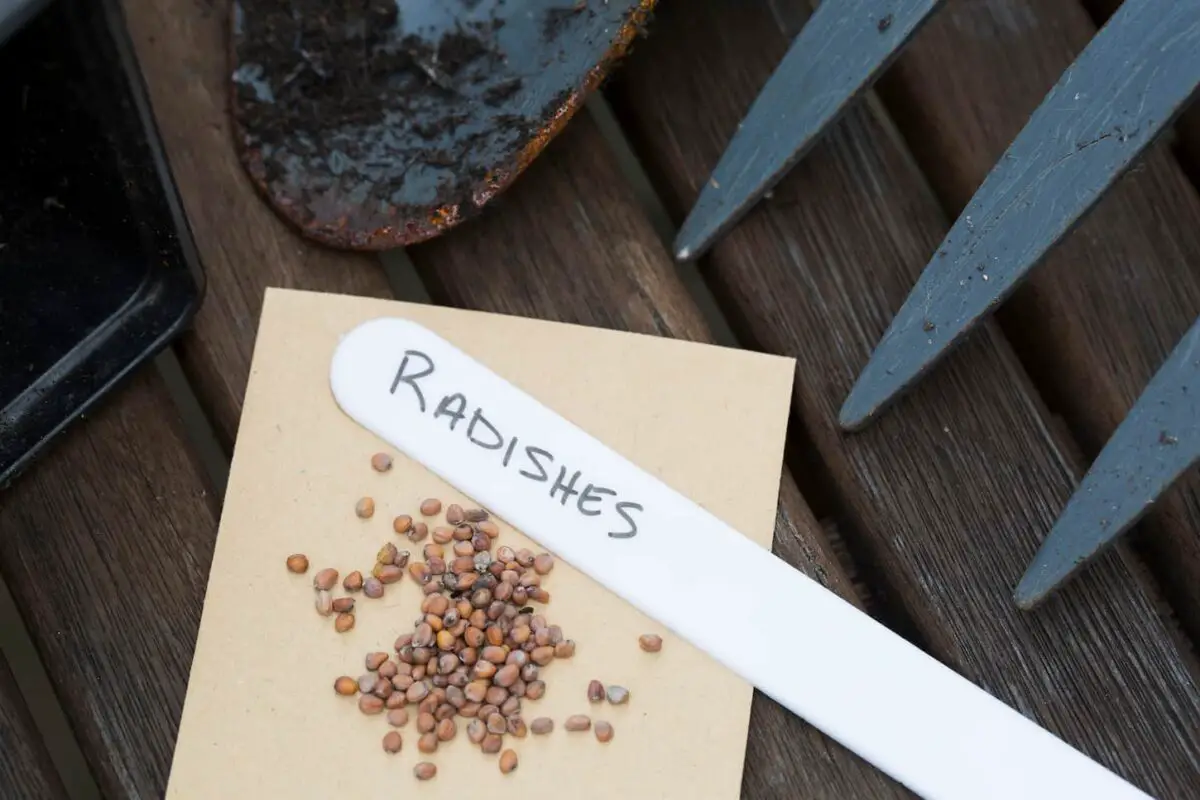
Types of Garden Seeds
There are three primary categories of garden seeds: Heirloom (open-pollinated), GMO (genetically modified), and Hybrid. There are also organic seeds, but any seed type can be organic or non-organic.
Understanding the distinctions between these types of seeds will help you make informed choices when selecting seeds for your garden.
Heirloom Seeds (open-pollinated)
Heirloom seeds are those passed down from generation to generation of family gardeners. These seeds come from open-pollinated plants, meaning they rely on pollinators like insects, birds, or wind for pollination.
Heirloom seeds maintain their original traits and characteristics, allowing you to grow plants with unique features and often showcasing better taste and nutritional value than hybrid or commercial varieties.
A key benefit of heirloom seeds is their ability to preserve biodiversity and history. When you grow heirloom seeds, you become part of a lineage dedicated to preserving precious plant varieties for future generations.
If you aren’t sure where to start with seeds (or seedlings), heirloom options are always a solid bet. Start with them.
Many heirloom varieties are also, by definition, Non-GMO. They’ve been selectively and naturally cultivated over generations but have not been genetically modified in a lab. They may also be organic, depending on how they were grown and harvested.
GMO Seeds
GMO seeds have been genetically modified through laboratory manipulation, meaning they may have undergone gene splicing or other artificial genetic modifications.
Some GMO seeds are available on the market, but others have exclusive patents and are far too expensive for backyard use.
To ensure you’re purchasing non-GMO seeds, look for a label indicating they have been verified as Non-GMO by a reputable organization like the Non-GMO Project. By choosing non-GMO seeds, you support natural breeding and safeguard your garden plants’ genetic diversity.
Hybrid Seeds
Hybrid seeds are two different plants that were cross-pollinated to develop a desirable result. Hybrid seeds are not usually genetically modified but simply cultivated (as has been done to heirlooms for centuries) for better results.
There may be some GMO hybrids, but they will be labeled as such.
Organic Seeds
Organic seeds are produced using organic farming practices prioritizing soil, water, and air health and supporting biodiversity. They are grown without the use of synthetic chemicals such as pesticides, herbicides, or chemical fertilizers.
When selecting organic seeds, look for certification from an organization such as USDA Organic or another equivalent certifying body.
Growing your garden from organic seeds helps to maintain soil health, promote biodiversity, and avoid the potential adverse effects of chemical residues on your food and the environment.
Non-Organic Seeds
Non-organic seeds are raised and cultivated in an environment where synthetic chemicals (pesticides, herbicides, or chemical fertilizers) are used.
Depending on which chemicals were used, they may have a different (usually inferior) germination rate than organic seeds. If you don’t know exactly which synthetic chemicals were used on the seed, I’d skip it – and find something organic instead.
Selecting Quality Seeds
When it comes to growing a successful garden, selecting quality seeds is an essential step. A few factors and guidelines will help you choose the best seeds for your plants.
Seed Quality Factors
Choose seeds from reputable companies that clearly label their varieties with details about their attributes, including seed variety, type, and expiration date. Seed labels should indicate if the seeds are GMO, Heirloom, Organic, or Hybrid.
As you consider which seeds to grow, make sure you consider your whole garden plan, and plan it together with your overall yard plan, including what you know about local pests, environmental problems, and anything else.
We prefer buying Heirloom organic seeds when we can. However, we have opted for some hybrid seeds at times. For example, we struggle to grow some types of gourds and melons due to bugs eating the plants. We’ve tried a lot of organic pest control options that failed (including chickens), but growing hybrid seeds worked.
Germination Rates
Germination rates are another crucial factor to consider in seed selection. Germination rate is the average percentage of seeds that successfully sprout and grow. Higher germination rates typically indicate better seed quality.
Most seed packets will provide information on germination rates, allowing you to make informed decisions about your seed selection.
Understanding seed quality factors and considering germination rates can help you select the best seeds for your garden. High-quality seeds will greatly improve your chances of a successful, diverse, and healthy harvest.
Popular Seed Varieties
Many gardeners stick to a few favorites based on what they enjoy eating. When starting out, that’s the smartest way to garden (grow what you’ll actually eat!).
As you gain confidence as a gardener, consider the importance of biodiversity in your garden. Growing various crops provides you with a diverse harvest and helps prevent pests and soil degradation.
Even so, let’s start with the basics.
Vegetable Seeds
Many gardeners love growing a wide range of vegetables in their gardens, depending on what they’ll eat. Some popular vegetable seeds include:
- Beans
- Broccoli
- Carrots
- Lettuce
- Peppers (technically, this is a fruit)
- Radishes
- Spinach
- Tomatoes (technically, this is a fruit)
Each vegetable seed has its own specific planting and growing requirements, so be sure to research and follow the guidelines for each type to ensure a successful harvest.
A note on peppers and tomatoes: botanically speaking, they’re fruits. However, since they’re usually used in cooking as a vegetable, they’re listed here.
As my dad used to say, “Knowledge is knowing that tomatoes are a fruit. Wisdom is not putting tomatoes in a fruit salad.”
Fruit Seeds
Fruit seeds can also add diversity and flavor to your garden. Plant what you’ll eat, enjoy, and be able to care for.
Some popular fruit seeds are:
- Blackberries
- Blueberries
- Raspberries
- Strawberries
- Watermelon
When growing fruits from seeds, be aware that some fruit varieties may not grow true to seed. This means the fruit produced may not be exactly like the parent plant.
Consider purchasing plants (seedlings or canes) from a reputable nursery for specific fruit characteristics.
Fruit Trees
Fruit trees can be a beautiful and productive addition to your garden. Popular fruit tree options include:
- Apple trees
- Cherry trees
- Nectarine trees
- Peach trees
- Plum trees
When selecting fruit trees, consider the tree size (dwarf, semi-dwarf, full-size), space available in your garden, and your region’s climate and soil conditions. You’ll need to pick a tree that fits your climate and the space available in your garden.
Furthermore, some fruit trees may require cross-pollination to produce fruit, so be sure to research and choose appropriate varieties for your specific situation.
Want to know about spacing for citrus fruit trees? There you go, though it also covers a lot of the other basics for citrus trees.
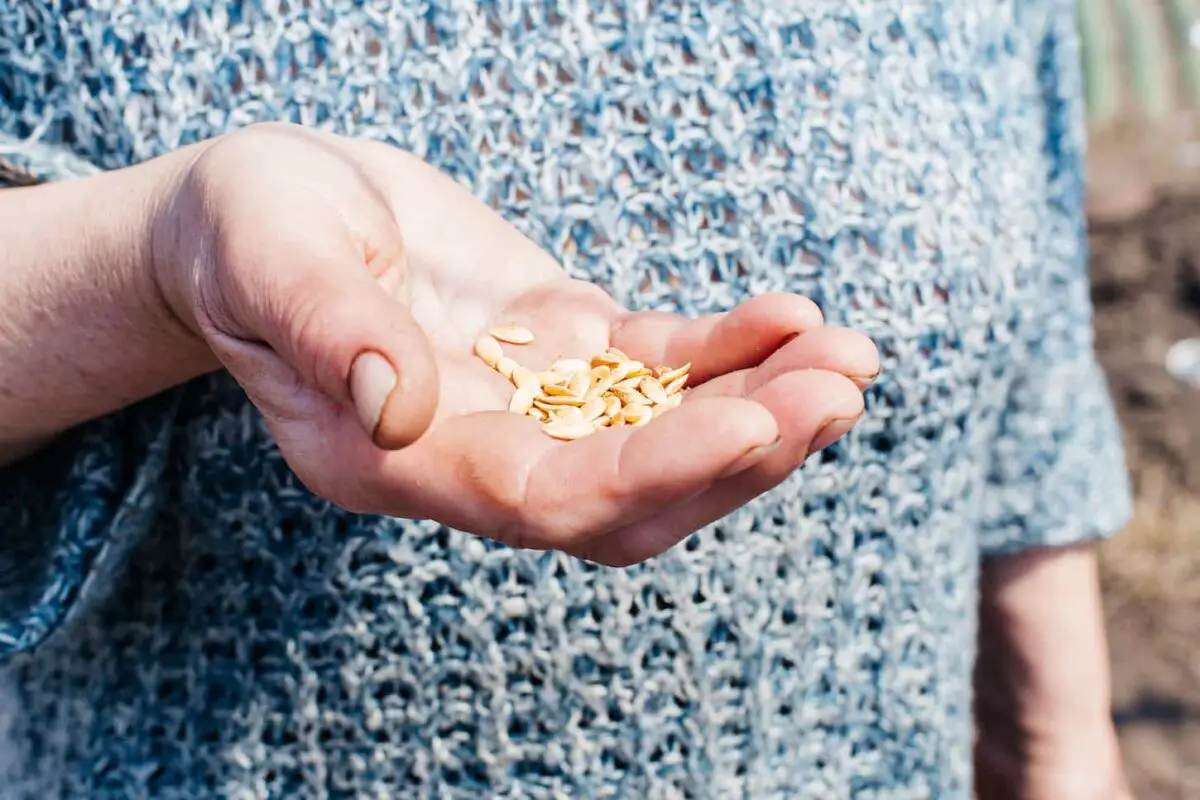
Maximizing Success with Seeds
To increase your chances of success with garden seeds, select the right seeds for your growing conditions, like your growth zone. If you have a particular type of soil, pick seeds that will do well in that soil type.
For example, our in-ground garden soil is clay-heavy. Root vegetables (like carrots) won’t do well in clay, as they need a softer soil. So for us, carrots would do better in a raised garden bed with garden soil – or in an area of the in-ground garden where the soil has been heavily amended and improved.
Planting Tips
- Choose easy-to-grow plants (like marigolds, nasturtiums, mint, and basil) to maximize success.
- Plant your seeds at a depth of approximately 1.5 times the seed’s width, ensuring they are evenly spaced in the soil.
- Water the seeds thoroughly and maintain the soil’s moisture until germination occurs.
Some seeds may also benefit from soaking in warm water for a few hours before planting, speeding up germination.
Pro tip: Some seeds germinate even better after going through “seed stratification,” or a simulated winter followed by simulated spring conditions to get the best germination results possible.
Not all seeds need to be stratified; and some seeds will only germinate after an intense level of stratification. Know which your seeds need, and stratify them as directed.
A basic stratification for seeds could be putting the seed packet in the fridge (in a waterproof container) for a few days; then, soak the seeds in some warm water before planting them in soil that’s temperature controlled (and warm enough for germination).
Creating Optimal Growing Conditions
Proper temperature, soil, and moisture are crucial for seed germination, while light conditions don’t matter until the seed has sprouted. Monitor the temperature, soil quality, and moisture levels of your growing area and ensure it remains within the optimal range for your seeds.
Most seeds won’t sprout unless they’re warm enough and have enough water, as that’s the trigger for growth once winter is over.
- Some seeds will do best if they’re premoistened (or even soaked) before being planted.
- You may also want to utilize humidity domes to maintain a favorable environment for germination.
- Consider using heat mats to maintain the proper temperature for seed germination.
- Once the seed has sprouted, provide adequate lighting, as light stimulates the development of the seedlings.
If you’d like to maximize your garden space and extend your harvest (while also spreading out the harvest), consider using staggered planting (also known as succession planting).
Staggered planting means you plant seeds at different times (perhaps in different parts of the garden) so that they mature at spaced intervals. There’s more to it than that, but this is an overview article, not a deep dive into succession planting.
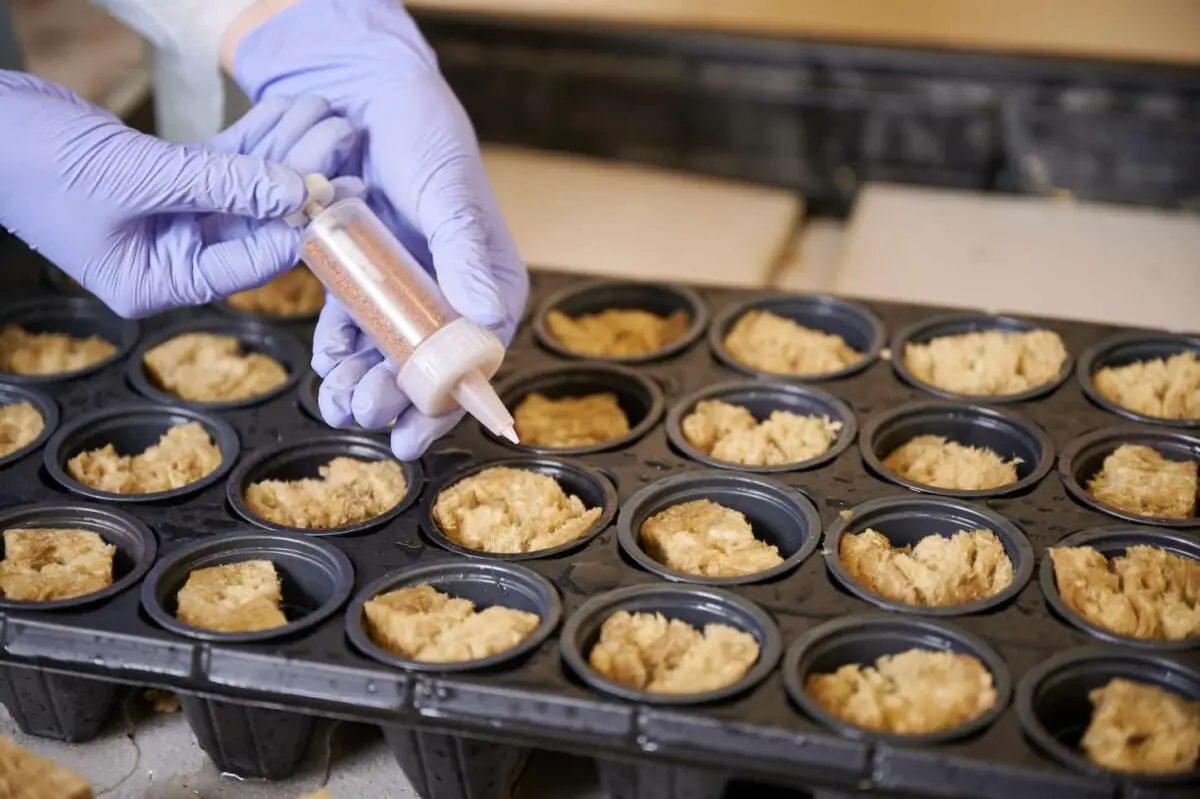
Enhancing Your Garden’s Productivity
Beginner gardeners will want to focus on the basics; but even beginner gardeners may want to boost their garden’s productivity. Boosting your garden’s productivity can be achieved through various techniques and methods that ensure you make the most out of your garden space.
Follow these tips to enhance your garden’s productivity significantly:
- Select high-yielding, easy-to-grow seeds: Choose an assortment of garden seeds that are easy to cultivate and highly productive.
- Succession planting: To maximize your garden’s productivity throughout the growing season, practice succession planting. As soon as one crop is harvested, plant another in its place. This technique ensures that your garden space is utilized efficiently, allowing for continuous harvests.
- Crop rotation: Rotating crops helps prevent the depletion of nutrients from the soil and helps control pests and diseases. Implement a systematic crop rotation plan to keep your garden’s soil healthy and maintain productivity.
- Soil enrichment: Healthy soil is vital for a productive garden. Enrich your soil by adding organic matter like garden compost or manure from organic farms. Using grass clippings and animal manure can also boost your soil’s nutritional value.
- Maximize available space: Make full use of your garden space by planting crops with overlapping growth periods, using trellises and vertical gardening techniques. Ensure your garden receives adequate sunlight; full sun is essential for fruiting plants like tomatoes, peppers, and melons.
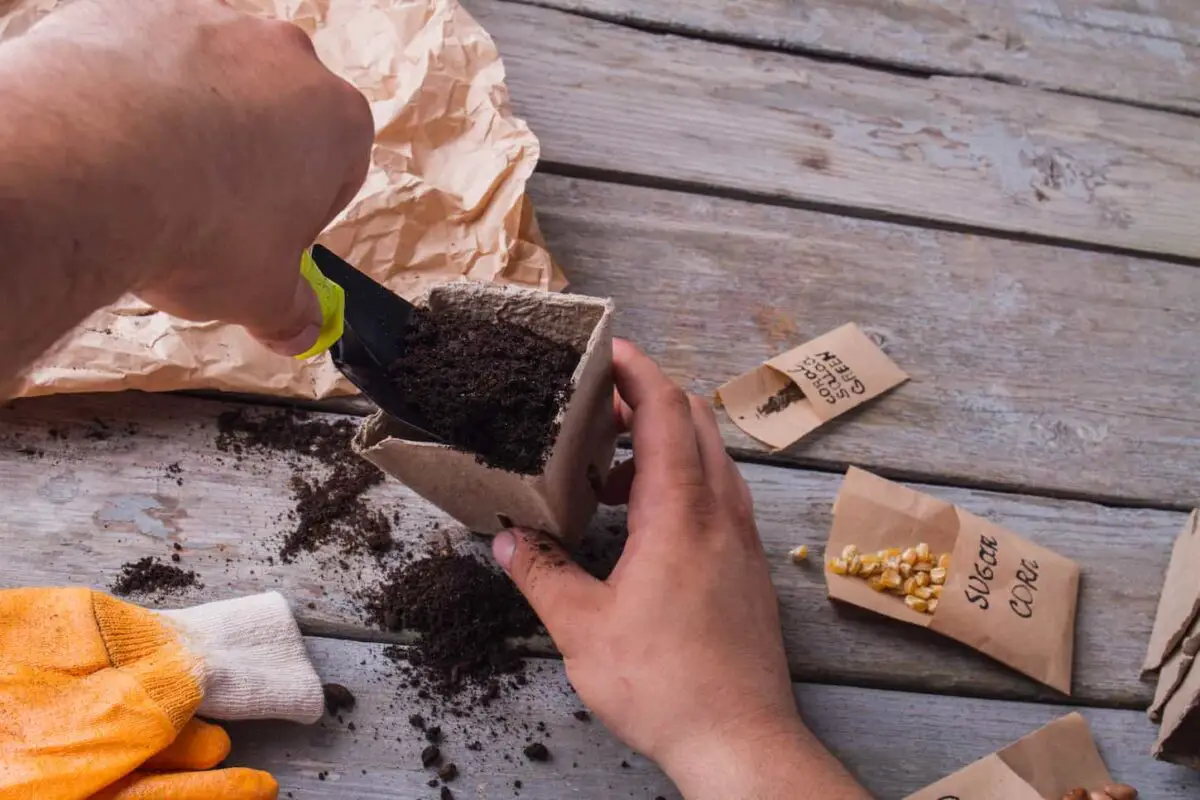
Best Places to Buy Seeds
The best places to buy seeds are reputable sources, whether in-person or online. Great local options include garden clubs, nurseries, or a good friend who keeps seeds. There are also various, reputable online seed catalogs to choose from.
Joining local garden clubs or online gardening communities can provide valuable insights from experienced gardeners. The right garden seeds can make all the difference in achieving a thriving, beautiful garden of your own.
Online seed catalogs, like Burpee and Johnny’s Selected Seeds, can be incredibly helpful, and their prices are usually very reasonable – even when compared to seeds bought at a local nursery.
In Person Places to Buy Seeds
If you’re just starting out and you haven’t joined a gardening club yet, start by looking on your favorite social media platform for a local (but virtual) gardening club. While you’re looking, you can rely on local stores for your seed supply.
When shopping for garden seeds in person, your best option for an affordable and easy experience is Home Depot. They cover the basic seed options at a low cost, and they may have some specialty seeds, too.
Plus, you can also find single packs of seedlings or their top-rated variety packs depending on your gardening needs.
Once you’ve dipped your feet into the gardening waters more fully, you should find and shop for seeds (and seedlings) at a reputable local nursery. We’ve got a favorite local nursery we do most of our plant shopping at, although I do still pick up seeds from time to time at Home Depot.
Online Seed Buying Options
Buying seeds online offers a wider selection of options for your garden.
Before making a purchase, be sure to research each store’s offerings, as some may specialize in specific types of seeds or cater to certain gardening preferences.
Some of the best online stores include the following:
- Burpee is a great option for seeds, seedlings, and trees. We’ve bought various things from them, especially specialty plants that our local nursery doesn’t have (or sold out of because we weren’t on the ball). When we order online, we usually order from Burpee.
- Johnny’s Selected Seeds: This store has provided high-quality seeds for 50 years and is one of Martha Stewart’s favorites. They carry an extensive catalog that meets all your vegetable garden needs.
- Gurney’s is another solid option for seeds, seedlings, and other plants. We’ve ordered a few things from Gurney’s before, too.
- Baker Creek Heirloom Seeds: This site sells rare and heirloom seed varieties of interesting and unique flowers and vegetables.
- Eden Brothers: Perfect for flower garden seeds, as they offer an impressive selection to enhance the beauty of your outdoor space.
- True Leaf Market: A leading online source for heirloom garden seeds, catering to those who value traditional and untampered varieties.
Pro tip: Keep an eye on shipping policies and possible discounts to ensure you’re getting the best deal possible. Almost all online retailers offer a discount if you sign up for their newsletter.
Any sales are also usually listed in a banner at the top of the site – or in a popup window. So watch for those, too.
Key Takeaways and Next Steps
Investing time and effort in selecting and growing the right seeds for your garden can yield a bountiful and delightful harvest. By understanding the stratification process and choosing seeds from reputable seed companies and various sources, you can create a thriving and environmentally conscious garden space.
When planning your garden, consider the beneficial aspects that come from gardening, such as the health and well-being benefits enjoyed by those who engage in this nurturing hobby. Additionally, opting for heirloom, non-GMO, and organic seeds can help you build a garden that aligns with your personal values and promotes sustainability.
As you apply the tips provided in this article, don’t forget to celebrate your progress and share your gardening knowledge with others. Your enthusiasm for the world of seeds and gardening can spark inspiration and encourage more individuals to cultivate their own green spaces.
Here are articles to help you through the next few steps of gardening.
- Container Gardening in Small Spaces: A Beginner’s Guide
- Watering for Healthy Plants: Essential Tips and Techniques
- Companion Planting: A Guide to Successful Plant Pairings
Now get out there and go enjoy your garden!
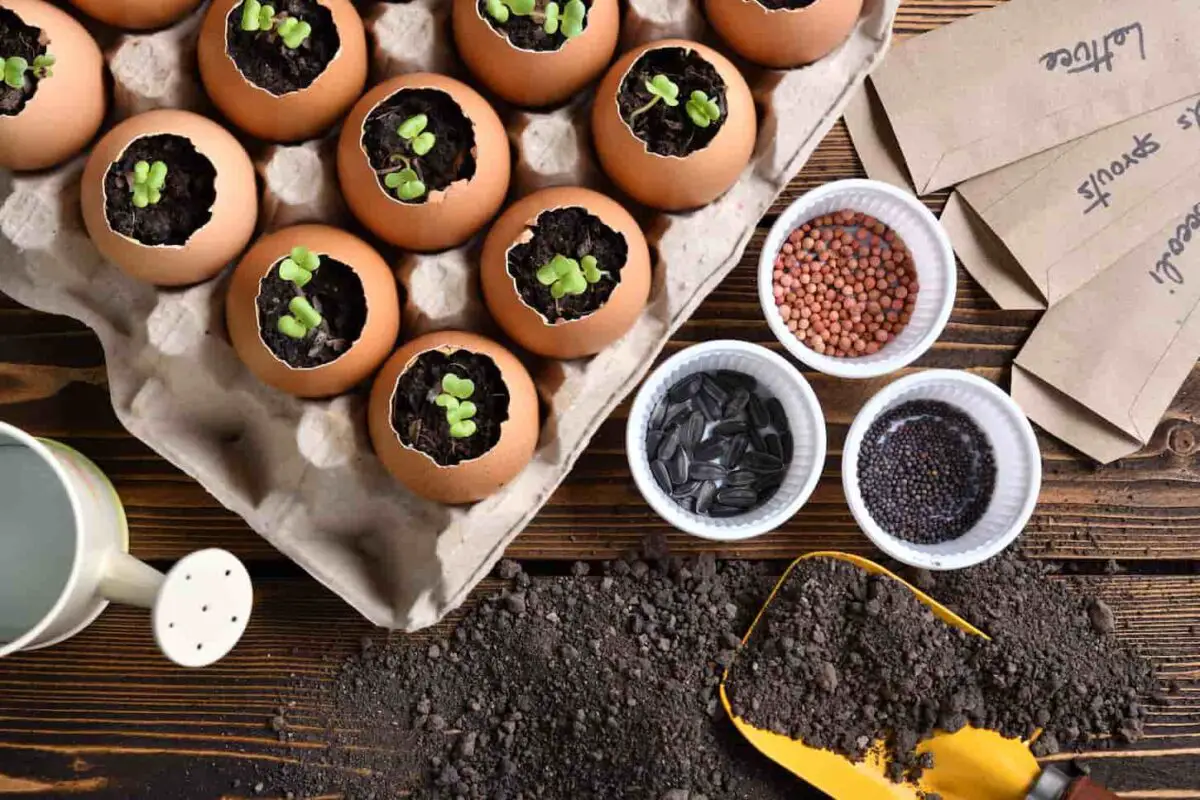
Resources
Learning from your own experience is essential, but learning from others is also intelligent. These are the sources used in this article and our research to be more informed as homesteaders.
- GardenersNet.Com. (2022, May 26). Types of Garden Seeds. Identify And Define Seed Types. https://www.gardenersnet.com/seeds/index.htm
- Greer, T. (2019). Seed Stratification: A Comprehensive Guide to This Seed Germination Trick. Morning Chores. https://morningchores.com/seed-stratification/
- Mfa, R. J. S. (2020, June 17). Seed, Soil, and Sun: Discovering the Many Healthful Benefits of Gardening. Healthline. https://www.healthline.com/health/healthful-benefits-of-gardening
- Murphy, S. (2023). How to Choose Seeds That Are Right for You (A Gardener’s Guide). Food Revolution Network. https://foodrevolution.org/blog/how-to-choose-garden-seeds/
- Ozawa, M. (2023, March 2). The 11 Best Places to Buy Seeds for Your Garden Online. Martha Stewart. https://www.marthastewart.com/8377511/best-places-to-buy-seeds
- Photographer, J. L. G. W. &. (2022). Growing Seeds: How to Grow Plants from Seeds. GardenDesign.com. https://www.gardendesign.com/seeds/starting.html
- SanSone, A. E. (2023, February 17). 10 Best Places to Buy Seeds for Your Garden. The Pioneer Woman. https://www.thepioneerwoman.com/home-lifestyle/gardening/g39682996/best-places-to-buy-seeds/
- Succession-Planting Principles & Methods | Johnny’s Selected Seeds. (n.d.). https://www.johnnyseeds.com/growers-library/methods-tools-supplies/market-gardening/succession-planting-methods-for-providing-a-continuous-supply.html